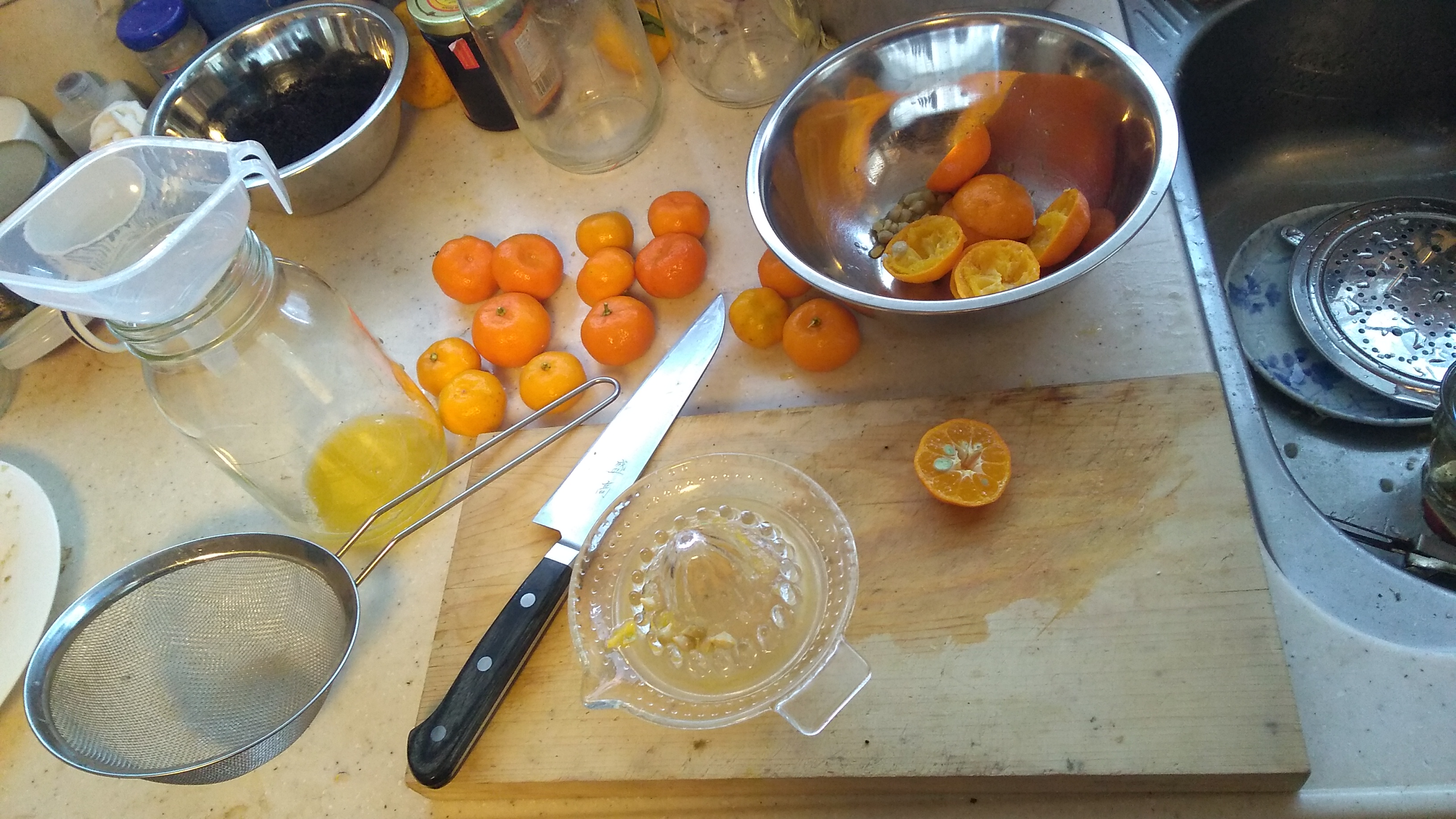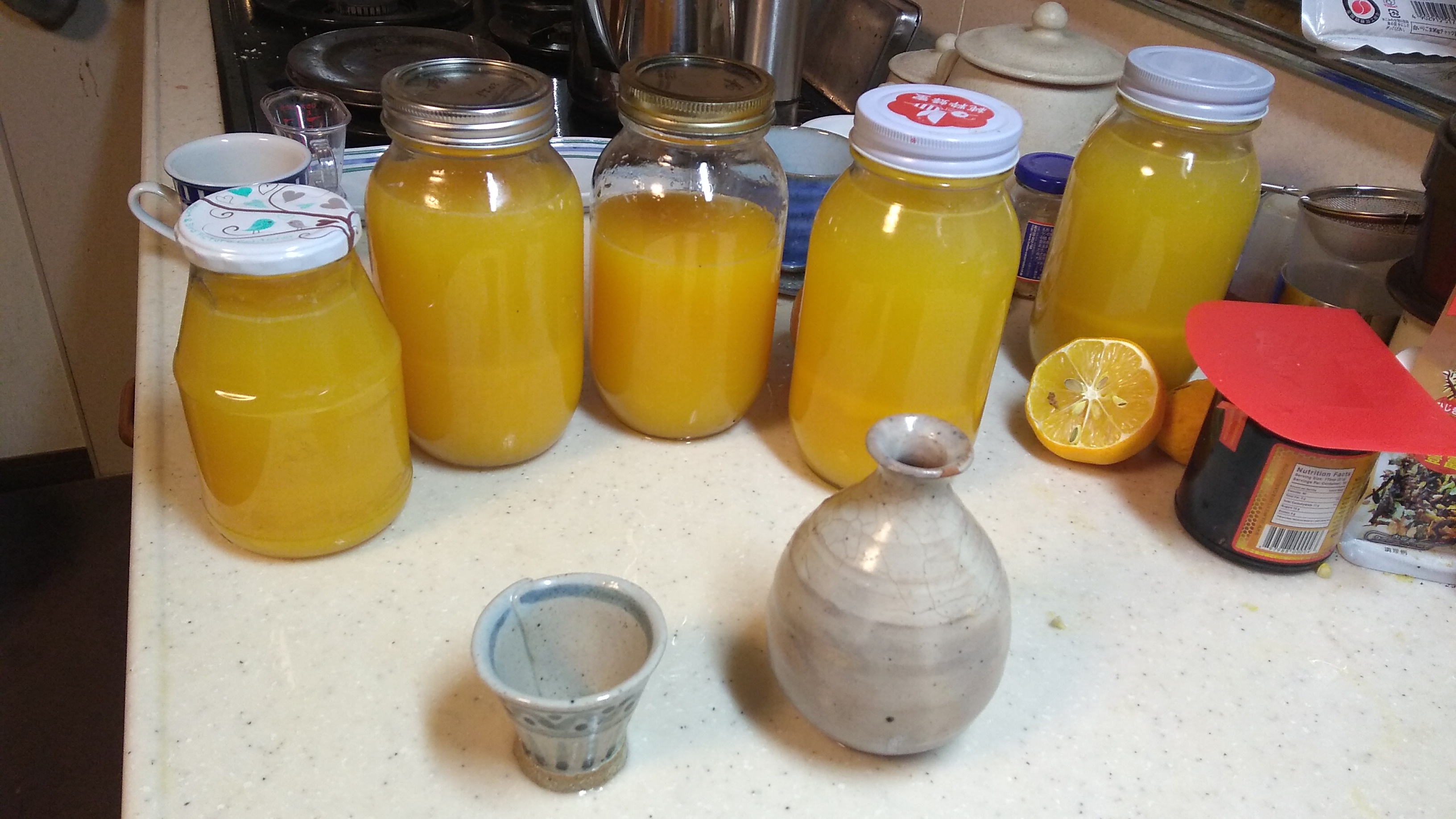Shiikuasa harvest
There are six varieties of citrus in the back garden: mikan; yuzu; lime; lemon; hassaku; and shiikuasa. If you aren’t familiar with it, the last in that list is commonly grown in Okinawa and southern regions of Japan. It’s so common in Okinawa that, during the visit for Mieko’s last rights, I was hard put to find orange juice on the shelves of a local market, until I realized that shiikuasa was in plentiful supply. It’s normally harvested when the fruits are green, but I was slow this year, and they look instead like little mikan. I’m well into the harvest of our single tree, but it has nasty thorns, progress is slow, and there are still plenty of clusters in there.


The fruits are tiny but there are lots of them. They come into the house in a five-kilo bag. We’ve done four or five of these so far this season, and there are more to come.


Shiikuasa have an exceptionally intense citrus flavor. As I understand it, they are commonly used as a zest, but with volume like this, juicing is the only way to store the harvest for use through the year. After the (tedious!) process of individually slicing and squeezing the fruits, this year I’m pouring the juice into ziplock bags and freezing it.


A single tablespoon of shiikuasa juice in a glass of warm water makes a nice beverage for mornings and snack times. At that rate, there is far more in the harvest than I can possibly consume in a year. Some of this will be routed to neighbors.


Addendum
The harvest is still in progress. Today was unusually warm for a winter day, but the story is the same: dress for thorns; cut fruits from tree; fill bag; change to wardrobe for kitchen work; slice; squeeze; filter into jar; slice; squeeze; filter; repeat again … and again … Despite the monotony and the incidental indulgence in a bottle of saké or so, there is a good deal of skill involved—the skill of avoiding RSI (the dreaded lemon-squeezer elbow).

